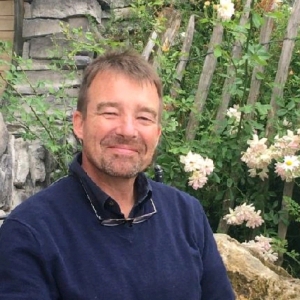Vice Chairman
Great Salt Lake Brine Shrimp Cooperative Inc.
Bio:
Bosteels obtained a degree in industrial engineering in biosciences at IHSR (presently Ghent University) in Belgium and has over 30 years of experience in the field of Artemia, aquaculture and aquaculture feeds production. After serving in the Belgian military, Thomas joined the Laboratory of Aquaculture and Artemia Reference Center at the University of Ghent. He subsequently worked in Vietnam and China on Aquaculture projects for the European Community (EC), the Flemish Inter-University council (VLIR) and the Flemish organization for Development and Co-operation (VVOB). Thomas then joined the private Aquaculture feeds Industry, for which he held several technical and managerial positions working in Asia, Central Asia, Europe and the United States. Recently Thomas served as CEO of the Great Salt Lake Brine Shrimp Cooperative and is currently Vice Chairman of the Cooperative. Thomas also served on the Nutrient Technical Team for the Utah Division of Water Quality and currently serves on the Technical Advisory Group for the Great Salt Lake Ecosystem Project (Utah Division of Wildlife Resources) and the Great Salt Lake Salinity Advisory Committee for the Utah Division of Forestry Fire and State Lands.
Title: The Importance of Sustainable Harvest Management and Salinity Management of Great Salt Lake: An Industry Perspective.
Abstract: Artemia and more specifically Great Salt Lake Artemia play a crucial role in the sustainable production of marine fish and shrimp worldwide. Great Salt Lake produces an estimated 40 to 50% of the world’s Artemia cysts and is therefore vital to support sustainable marine aquaculture. Existing research strongly suggests that salinity and harvest management play a crucial role in sustaining a healthy Artemia population on Great Salt Lake. The Utah Division of Wildlife Resources (DWR) first implemented the adaptive Artemia harvest management in the late 1990’s. More recently, the Utah Division of Forestry Fire and State Lands (FFSL) modified the adaptive management berm separating Gunnison Bay from Gilbert Bay in an effort to manage salinity to support the ecology of Gilbert Bay. Recent publications describing changes in salt mass in Gilbert Bay support these management actions. We present several decades of industry harvest data that validate the DWR’s approach to sustainable harvest management as well as more recent Artemia population data, Artemia cyst hatchability data and salt mass data in support of the berm management actions recently implemented by the Utah Division of Forestry, Fire & State Lands.

